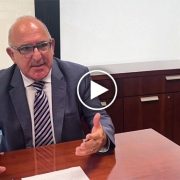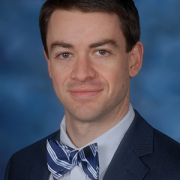Q&A with Dr. Kuppermann: Collaboration is critical for scientific success
Nathan Kuppermann, M.D., M.P.H., is taking on a pivotal role at Children’s National Hospital as executive vice president, the new chief academic officer (CAO) and chair of Pediatrics to continue growing the institution’s reputation as a world-class research hospital. He brings more than 30 years of clinical experience in pediatric emergency medicine and research to the leadership role, where he will oversee nearly 2,000 active research projects at the Children’s National Research Institute.
Dr. Kuppermann knows that science drives cures and improved outcomes. Early in his career, he received enhanced research training at the Harvard School of Public Health, where he laid the groundwork to become a globally recognized clinical researcher. He has studied when to order CT scans for children with head, abdominal and neck trauma to minimize radiation exposure, how to best manage children with diabetic ketoacidosis, infants with febrile illnesses and other complex questions in pediatric emergency medicine that require a multidisciplinary research approach to improve clinical care.
Dr. Kupperman is thrilled to join the scientific community in the nation’s capital, which he sees as a global city where he can authentically share his culturally rich background. He is the son of Brazilian immigrants — a chemical physicist and an organic chemist — and he married a pediatric endocrinologist whose parents are from Mexico and Germany. They have three daughters, and their youngest was adopted from Guatemala. As a family, they travel extensively, and he cares deeply about global health, having served as associate dean for Global Health at UC Davis.
A high school point guard who still plays basketball, Dr. Kuppermann runs his team’s offense on the court, choreographing the flow of each game to optimize his team’s strengths. The position requires peripheral vision to get the ball to the right player and make everyone look good. He sees parallels with his new role as CAO.
Q: What is your approach to research in pediatric healthcare?
A: Fundamentally, my philosophy around research is that we all need to collaborate. When I started doing my own research, I realized over time that to have big, impactful studies, two things had to happen: First, you need to work with people who have expertise beyond your own. I’m a big believer in team science and bench-to-bedside research, collaborating with people with complementary research skills.
Second, I realized that in pediatric research, you must collaborate in research networks to ensure your sample size has enough patients and patients from diverse populations to have definitive results and generalizable data.
Q: What values will you bring to the new role?
A: Three key elements come to mind. First, I’m a big believer in transparent communication, which is the root of everything good in life, whether it’s with your science, your friendships or your family.
I’m a big believer in team science. We all have certain areas of expertise, but if we want to combine our expertise to impact children and improve their health, we need to work together in teams, bringing together basic science researchers, clinicians, information technology specialists, knowledge-translation specialists and disseminators.
Finally, I am a cheerleader for science. As you develop your own science, you also are responsible for leading the next generation of scientists. I’ve spent as much time being a scientific mentor as I have working to discover new knowledge through scientific inquiry.
Q: You talk extensively about your family’s international roots and how it drives your work. What is the role of diversity in medicine and how does that guide you?
A: Diversity is fundamental to healthcare. We in the medical community recognize the disparities in the care we deliver, which I’ve studied in my research. Diversity must not only be a research focus, but our teams must be diverse to better investigate — and work to resolve — these inequities of care.
Children’s National is both a hospital that is mindful of its immediate community and an institution that greatly values the diversity of its patients and its staff. It’s also highly ranked in research and cares deeply about global health, all of which are drivers in my work.
When I considered the potential of coming to Children’s National, I thought I might be able to help this already great institution further its mission by serving its immediate community, growing and developing its global health programs, and taking research here from its already great bones and accomplishments to the next level.
Q: What approach do you bring to clinical care?
A: When I do a research study and enroll patients into a clinical trial, I think about the patient and others the research can impact. I frequently think of a quote by the late Paul Brodeur, a scientific writer who wrote a lot about asbestos, which is very powerful and meaningful to me: “Statistics are humans with the tears wiped away.”
And what it means to me is that we must be mindful as researchers that we’re talking about humans with our research. We’re not just talking about numbers, and we’re not just talking about getting grants and papers. We’re talking about how we can elevate the evidence and translate it to the bedside to improve the lives of humans.











